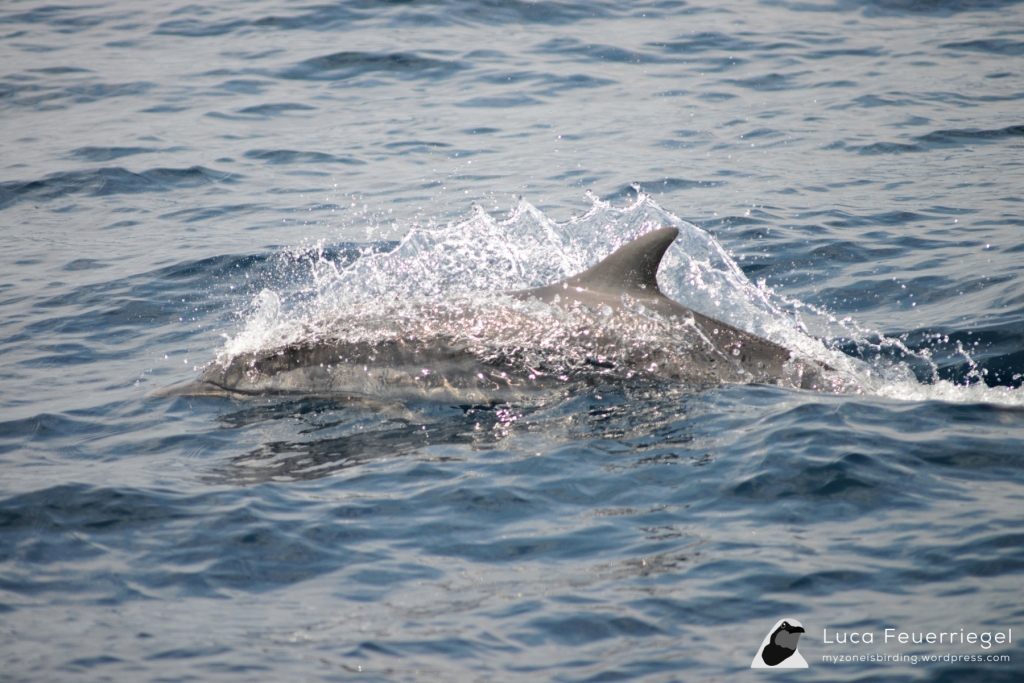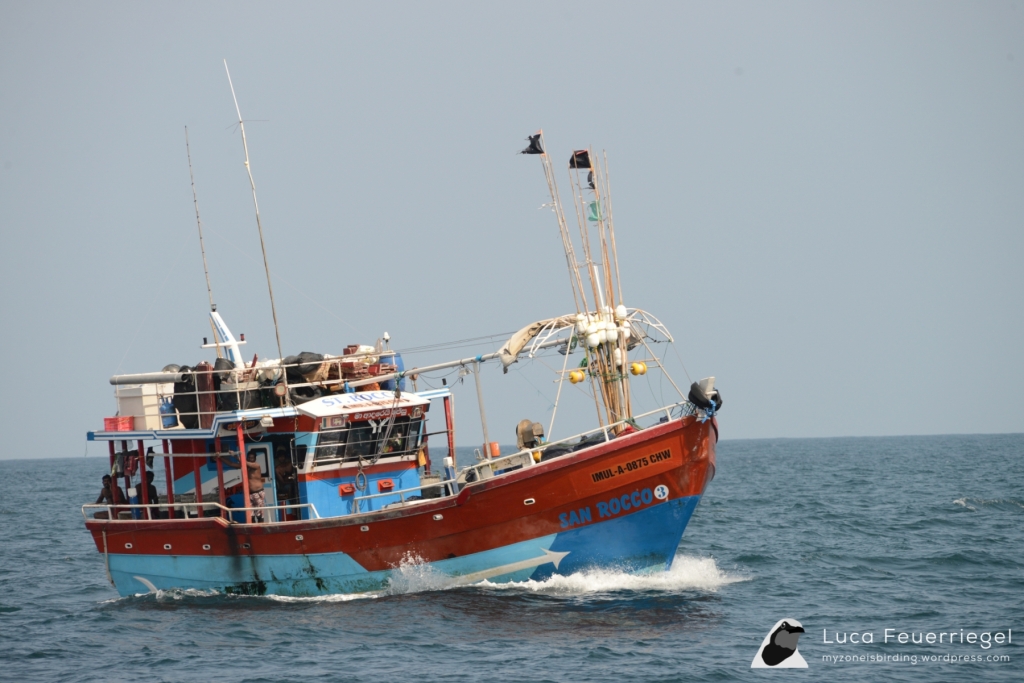Pelagic birding is relatively new in Sri Lanka. While seabirds have been recorded from land as well as from boats, long-term systematic observations have not been made. This means that detailed distribution and migration patterns of many uncommon seabirds are relatively unknown. As a result of this, recent pelagic trips have nearly always turned up something special, including South Asia’s first photographic record of a Sooty Shearwater earlier this year. Therefore, it was unsurprising that I was extremely excited when I joined another trip in late April. With an unusually large number of good birds seen, I was not disappointed.
A small town on Sri Lanka’s South coast, Mirissa is famed for its whale-watching. Resident Blue Whales, the highlight that draws most tourists, often attract over a dozen crammed boats noisily fighting for the best for the best views, including when I went on such a tour three years ago. The same place however is also an attraction for a small crowd of resident birders. Pelagic birding trips organised by Gary Allport and Moditha Kodikara Arachchi using whale-watching boats caught the attention of many resident birders. While not many trips have been conducted so far, pelagic birding has quickly become popular. So when Gary informed me of an upcoming trip and invited me to join, my response was obvious. Despite the COVID-19 situation I clearly was not the only one with that mindset. We were a group of around 15 that assembled in front of the small boat in Mirissa Fisheries harbour in the morning.


A Striated Heron was foraging at the breakwater as we left the harbour at around 7:00, but few paid attention as everyone was wondering what we might see over the next few hours. The coastal waters produced many terns, with attractive breeding-plumage White-winged Terns being the most common. Little, Great Crested, Lesser Crested, and Common Terns were also present, and occasionally small groups of Bridled Terns flew past. Before the end of the trip, this was also where we were rewarded with Brown Noddy and Lesser Noddy, both lifers for me, among the other terns. Both of these were single birds that quickly flew past the boat, only allowing brief views and blurry record shots that were just enough to clinch their ID.

There are apparently no trawlers in these waters, so the birding consisted on scanning the sea for usually distant, fast-flying seabirds. As they pass by very quickly and usually far away, identification depended either on a very experienced eye or on photos. It usually turned out to be the latter as the boat was rocking around quite a bit and most people were not experienced pelagic birders. In Cape Town, where I did a pelagic several years ago when living in South Africa, pelagic birding is most rewarding when you encounter a trawler, as huge numbers of pelagic birds usually follow these ships in the hope of obtaining scraps. Here however, everything was quiet for half an hour or so, until someone suddenly shouted “shearwater!” and everyone scrambled to take a record shot or focus their binoculars on the distant bird, quite an entertaining scene.
Once we were so far out that you couldn’t see the shore anymore, birding became far more quiet and consisted mainly of shearwaters. Most of these turned out to be Wedge-tailed Shearwaters, a new species for me. However, eventually one less distant bird was a Flesh-footed Shearwater. After a long quiet period, the usual shout “shearwater!” focused our eyes on a distant, but rapidly approaching Ardenna. While it made a close fly-by it displayed its silvery-grey flash on the underwing that is so characteristic of the Sooty Shearwater. Relatively soon after this, we found another Sooty Shearwater sitting on the water, busy feeding on what turned out to be a squid, completely indifferent to our boat nearby. Having two sightings of this rare bird in one day was very special, although this species is most probably under-reported. We even saw a distant Short-tailed Shearwater, the fourth shearwater species of the day and another lifer.



Apart from shearwaters, we saw a few jaegers. I wanted to see these birds since I first came across them in their elegant breeding plumage while paging through the seabird sections of my bird guides. However, I worried that my first sighting of these species would be in their far less spectacular immature or non-breeding plumage. Fortunately, I was not disappointed as we had a striking, albeit very distant, Pomarine Jaeger. A second Jaeger we saw was much harder to identify. It appeared to have features of both Pomarine and the much rarer Parasitic, and its ID remains unsolved. I hoped to see storm-petrels but this was the wrong season for them. Interestingly, most seabirds are best seen during the South-West monsoon season from May to July, but Wilson’s Storm-Petrel occurs during the Northern winter months, during which it is common.
Apart from birds, we were also entertained by dolphins several times. Mostly we had groups of Spinner Dolphins which, to our delight, performed countless of their signature spinning jumps. This was particularly entertaining as their antics disrupted the frequent dry spells in the birding terms. An equally special sighting was that of a small group of the less spectacular but rare Striped Dolphins, which I had never seen before.


All in all, the trip was very successful. The eight lifers that I added to my list after the trip showed that I have not done much pelagic birding, particularly in tropical waters. We were very lucky on this trip; even the most seasoned members said that this was the best trip they were on. Birds aside, a highlight was talking to other members of the group, particularly Moditha, with whom I spent a lot about birding in Sri Lanka, as well as research he is currently conducting. In particular, he is researching on peculiar swiftlets that have been observed in the wet zone lowlands. These have significantly lighter rumps, among other features, than the Indian Swiftlet (the only species currently known to occur in Sri Lanka), demanding explanations of their taxonomic status. Other such conversations also whiled away the time between bird or dolphin sightings, which contributed to a very satisfying trip.
What a wonderful opportunity for you Luca, pelagics are very special times to see birds we never normally see. You had some good finds especially with the different Shearwater species.
LikeLike
Yes I was very happy that I had the chance to go! With the shearwaters it was interesting to see how hard it is to identify them – I really struggled as I am not experienced with seabirds, and even the most experienced members required photos to ID some of the shearwaters that we saw.
LikeLiked by 1 person
Yes they are very difficult to confirm ID
LikeLike
I wish I could have joined!!
LikeLike
So do I, it was a very enjoyable and successful trip!
LikeLike